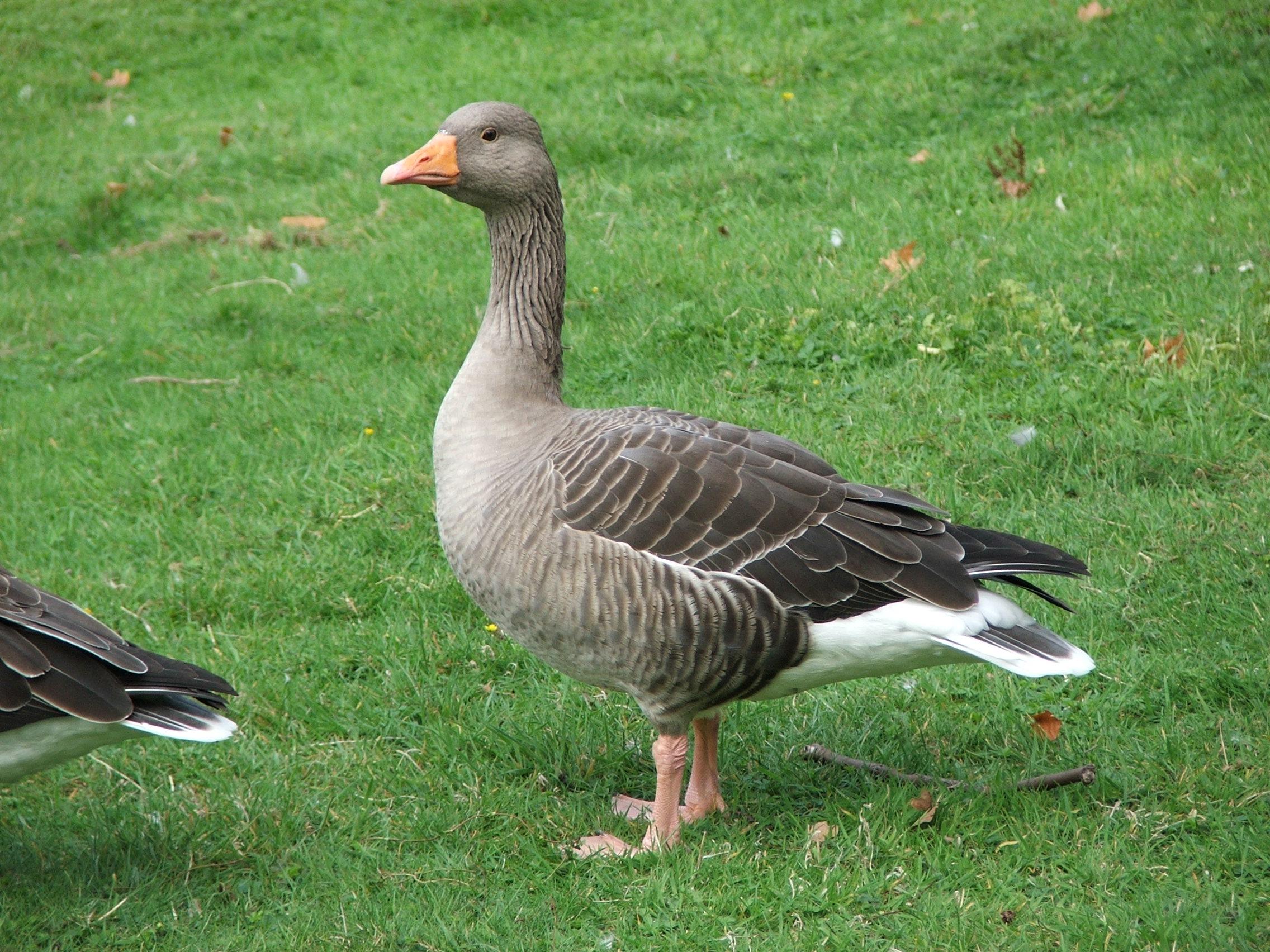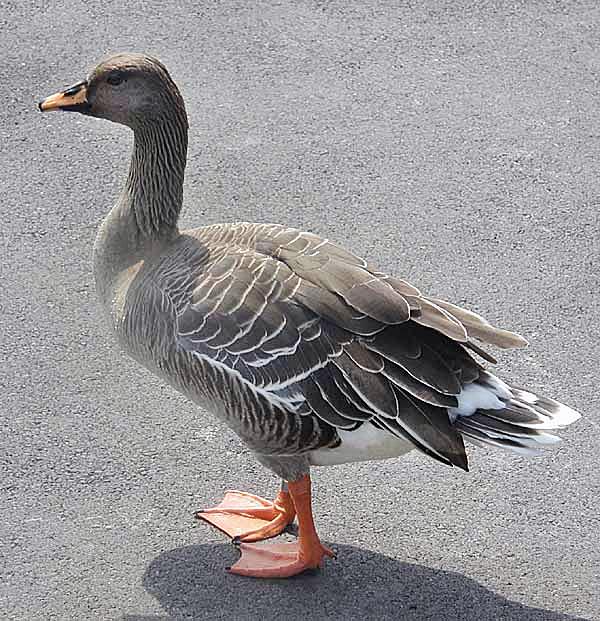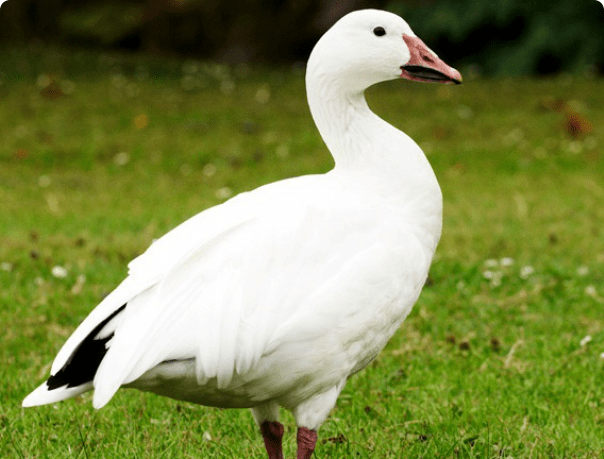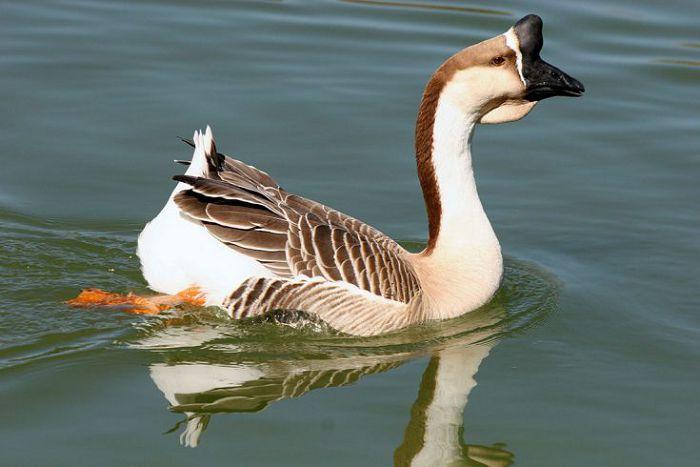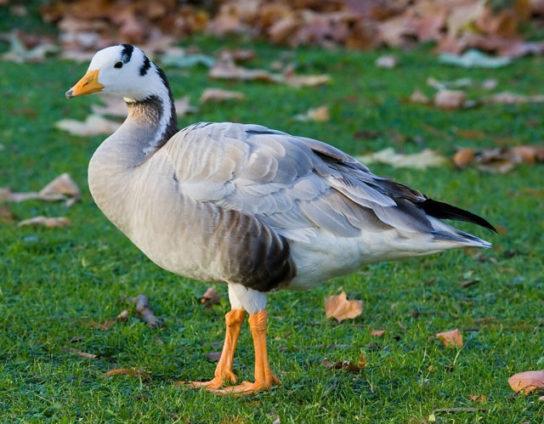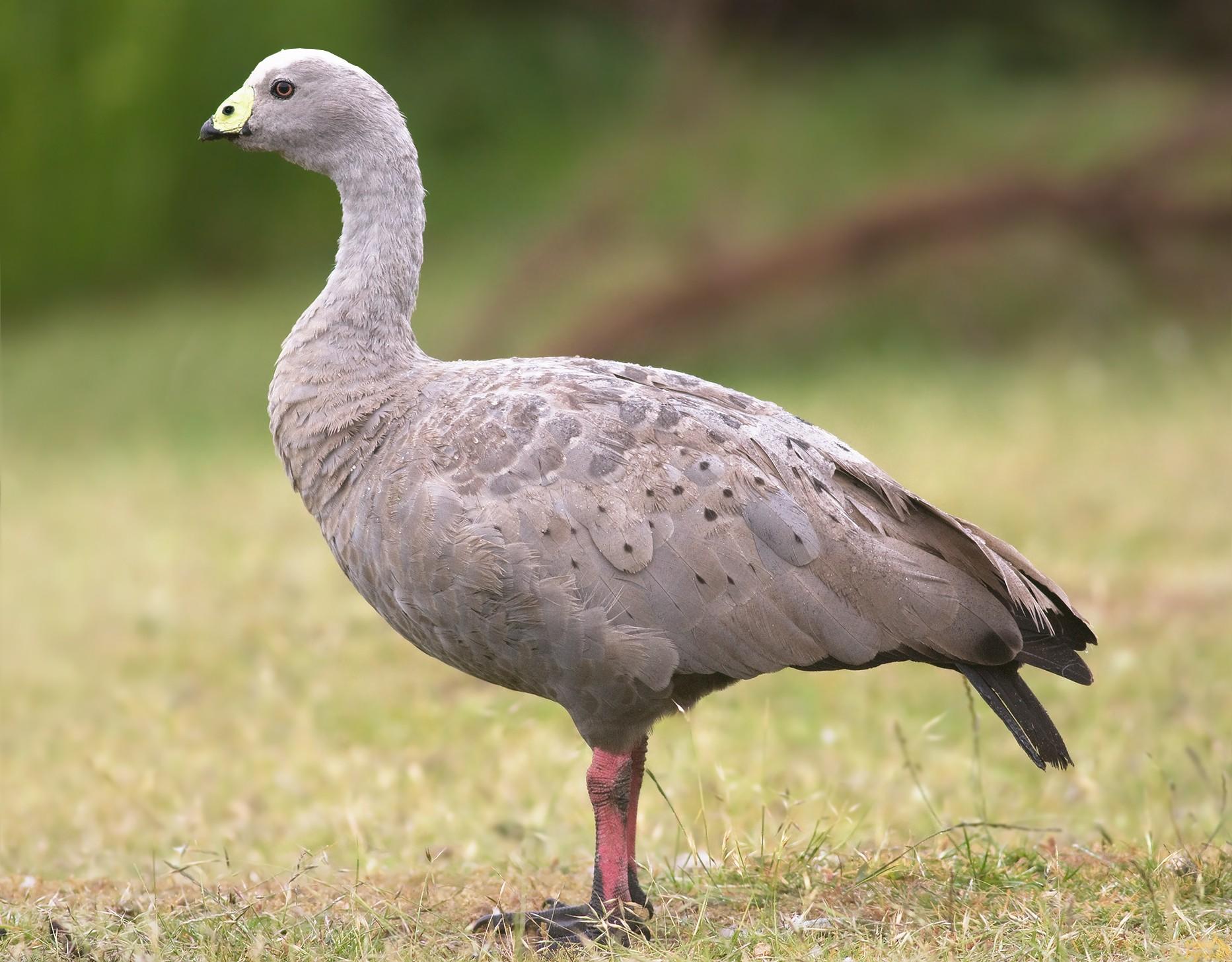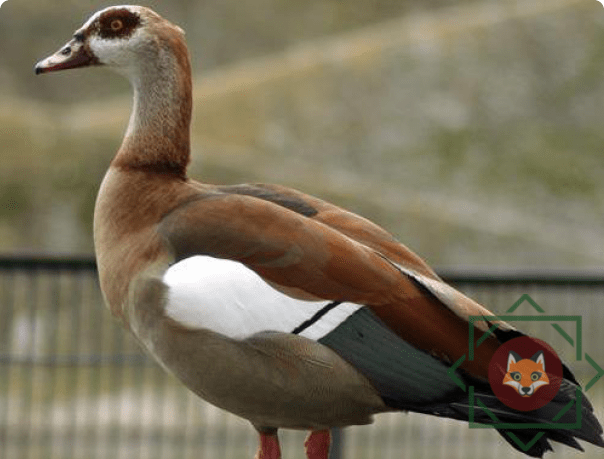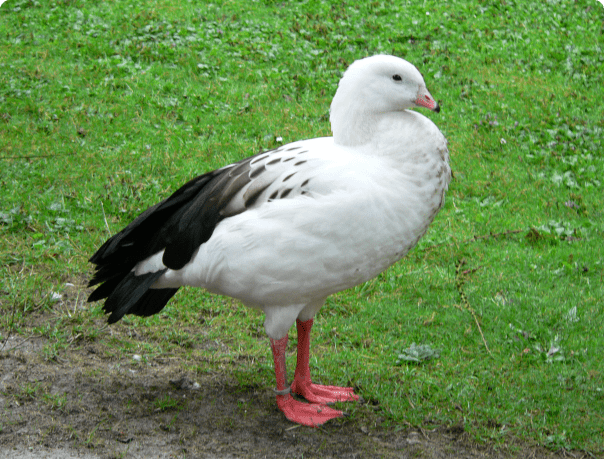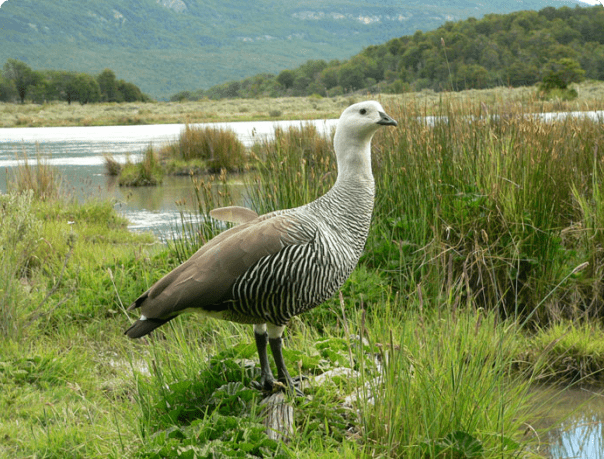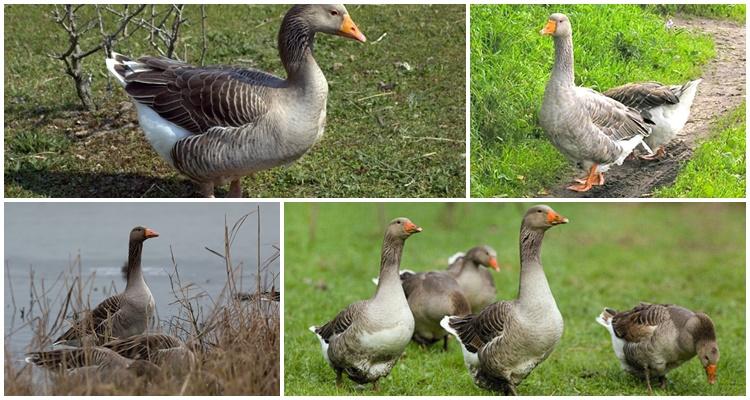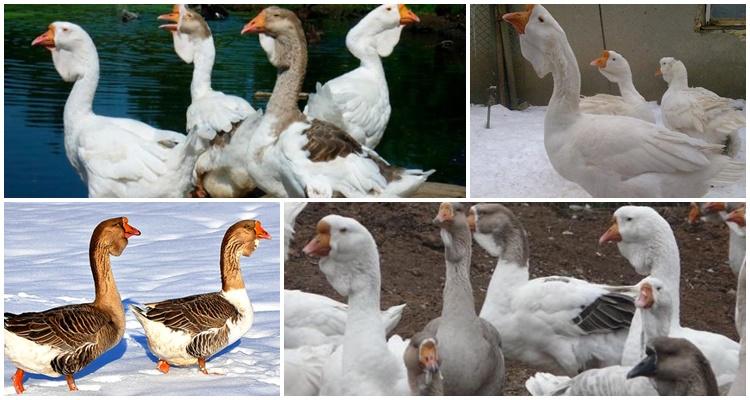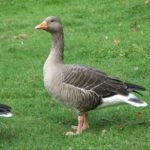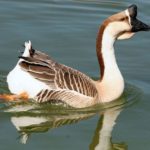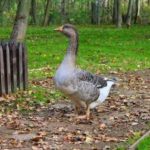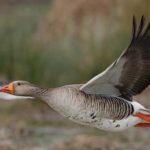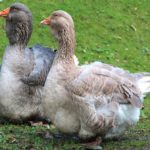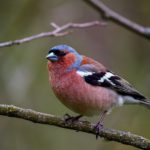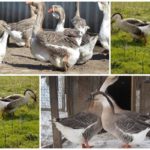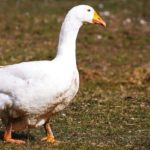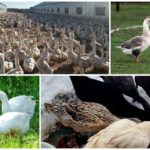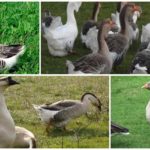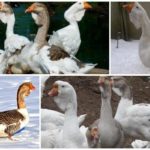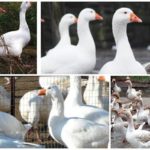Wild geese traditionally live near large bodies of water. They love space, manage to obtain food on their own, and tolerate small fluctuations in air temperature well. There are about 11 species of wild geese. Within these groups, a detailed classification is provided by type, appearance, and features of the species. Wild geese belong to the group of waterfowl of the Anatidae family.
General description of the wild goose
Species of wild geese are characterized by common characteristics that distinguish them from domestic geese and ducks:
- the presence of a long neck;
- strong muscular body;
- enlarged beak.
Birds of this species fly south when cold weather sets in. The flock forms a classic wedge; as the leader decreases, the entire flock gradually decreases. By the time they arrive at the place, pairs have already been formed within the flock for further mating.
The lifestyle of geese is formed in close connection with the change in plumage. When the feathers fall off, the geese hide. After renewing their plumage, they come out again, begin to hunt, and actively move around.
Species of wild birds
Researchers studied 11 species of wild birds in detail. Among this classification there is an additional division into subspecies.
Gray Goose (Anseranser)
A classic type of wild goose, which received its name due to its appearance. The plumage of the bird is traditionally gray. The body length is about 90 centimeters. This species has a maximum possible wingspan of 170 centimeters.
Gooseberry
Small birds, the body length of which is 70-80 centimeters. The plumage of geese of this breed is interesting; among the gray feathers there are different variations of gray-white or black inclusions.
Reference! Bean goosebumps live near swamps and small closed reservoirs, feeding on vegetables and grains.
White or polar goose
This bird makes an impression on those who see it for the first time. The reason for this is the snow-white color of the feathers and the presence of black edging around the edges of the wings. Geese prefer to live in the cold regions of Siberia and Canada, but when temperatures drop significantly, they fly to the Gulf of Mexico.
Reference! A feature of the breed is the creation of a large flock, which numbers up to 1-2 thousand individuals.
Sukhonos
Sukhonosy is a large breed, body weight reaches 6 kilograms. The maximum wing beat helps the bird to move quickly when detecting danger. The sukhonos is well versed in the depths of a reservoir, as it is accustomed to deep diving. When a person approaches a pond, it skillfully camouflages itself among the grass and sedge.
Mountain
Birds of this breed live in the mountains of Asia. In winter they move to warm regions of India or Pakistan. Birds are distinguished by the presence of characteristic black horizontal stripes on the head; the body weight of a mountain goose reaches 3 kilograms. The bird feeds on berries, grass, and small insects.
Chicken
The chicken goose lives in Australia. It has an unusual appearance. The long, large gray carcass seems disproportionately large compared to the small head and retracted, almost flattened beak.
The wingspan reaches 170 centimeters, the weight of the body varies from 6 to 7 kilograms. The chicken breed is not adapted to swimming, so it lives on land, preferring places located near bodies of water.
Nile goose
A miniature breed whose total body weight does not exceed 3 kilograms. The wingspan reaches 150 centimeters. Birds eat greens and small insects and lead a calm, measured lifestyle.
Andean
The Andean species prefers to remain on land for most of its life. Birds dive into water only when they sense danger approaching. Small bodies of a white-gray hue are distinguished by black plumage at the ends of the tail. The color of the head remains uniform and white.
Reference! Andean females are smaller in body size than males.
Magellanic goose
The Magellanic breed lives in the foothills and plains.The feathers of females are colored with gray or brown shades; the males of the breed are distinguished by white plumage. Individuals of small size with small wing beats, given favorable conditions, can live for 25 years.
Range and habitats
Wild geese live on the coasts, near various bodies of water. Unlike swans and ducks, they spend less time on the water. Habitats in Russia depend on the species and characteristics of the breed.
| Habitat | Breeds |
| Meadows, near bodies of water | Gray, dry nose. |
| Wetlands | Gooseberry, white. |
| Mountains | Mountain. |
| Streams, lakes, ponds | Grey, white. |
Contrary to the popular belief that all birds of the duck family can swim, some subspecies of wild individuals are not adapted to living in water bodies. The characteristics of the breeds require them to be located near bodies of water, but many individuals do not go down to water even once in their entire lives.
Reproduction and offspring
The techniques used to domesticate a wild breed allow birds to be successfully bred. In this case, it is necessary to follow the established rules:
- For home breeding, it is necessary to ensure comfortable conditions: the size of the nest should be 60 centimeters with sides up to 15 centimeters high.
- For successful breeding, it is necessary to establish a daylight period of up to 13 hours, no less.
- It is necessary to control the moment of puberty. Wild breeds mature in the third year of life, from this time they begin to build nests and look for partners.
- To keep the nest warm, it is recommended to add special bedding made from down and feathers.
Reference! In the presence of comfortable conditions, females lay from 50 to 70 eggs in 1 season.
Dangers and enemies of wild animals
Wild birds have many enemies.Human hunting poses a danger. When a person approaches, the birds crane their necks, listen, and then cackle. This sound becomes a signal for other individuals, they quickly leave their place and move to another territory.
In nature, predators of the mustelid family pose a danger. They purposefully hunt birds, tracking down weak birds that can be easily caught. For young animals, crow raids pose a danger. Crows steal chicks, pounce on weak geese, peck them on the head and make it impossible to fight back with their wings.
Information! The weak point of the goose is its long neck; predators try to grab the neck with their teeth so that the bird loses the ability to resist.
Status and commercial value
A man hunts a wild goose for different purposes. For domestication and further breeding, birds are hunted with ropes. This technique allows you to catch an individual without harming it.
Shooting is carried out in order to obtain tasty meat. Game is highly valued for its taste; it is sold to restaurants and cafes, and is also prepared independently according to traditional recipes. Each region has adopted and monitored the rules by which hunting is permitted.
Certain breeds of wild birds are listed in the Red Book, and the shooting of birds is regulated by law. Due to extermination, a wave of which swept across the country in the 90s, small populations of bean goose are included in the Book, gray and white geese.

